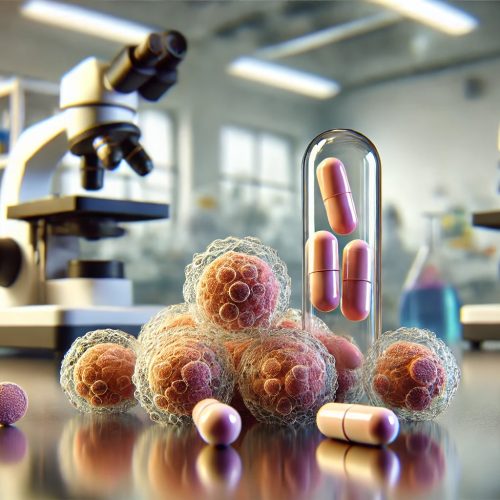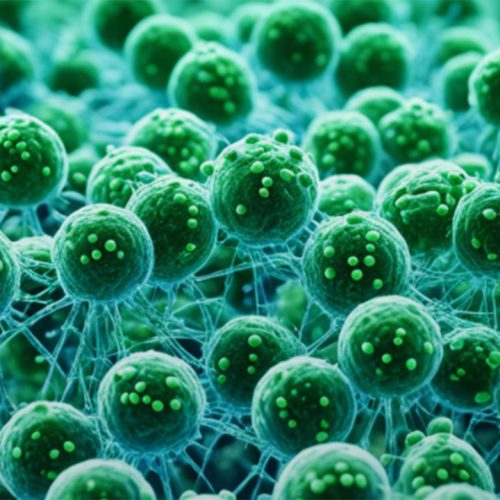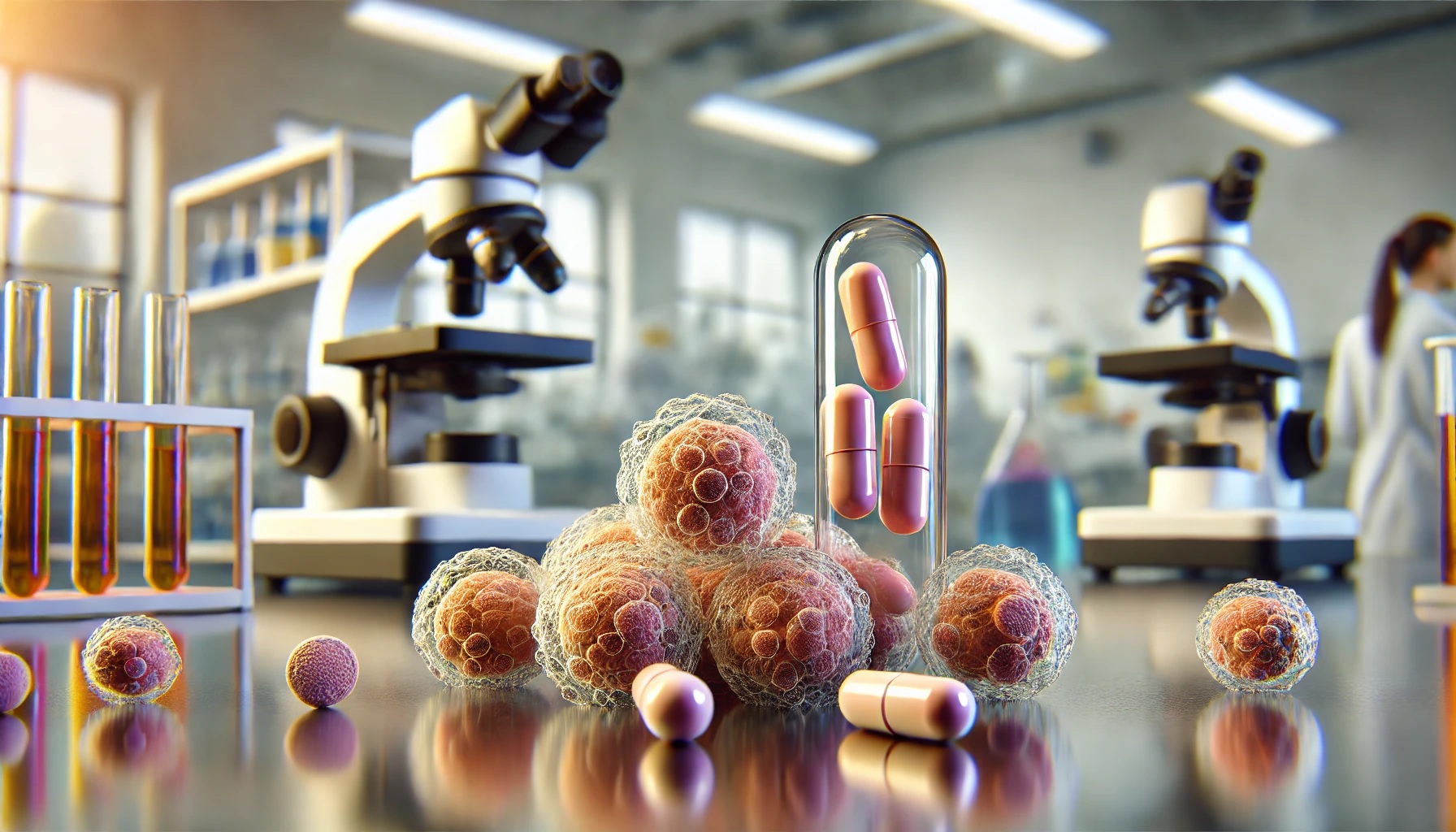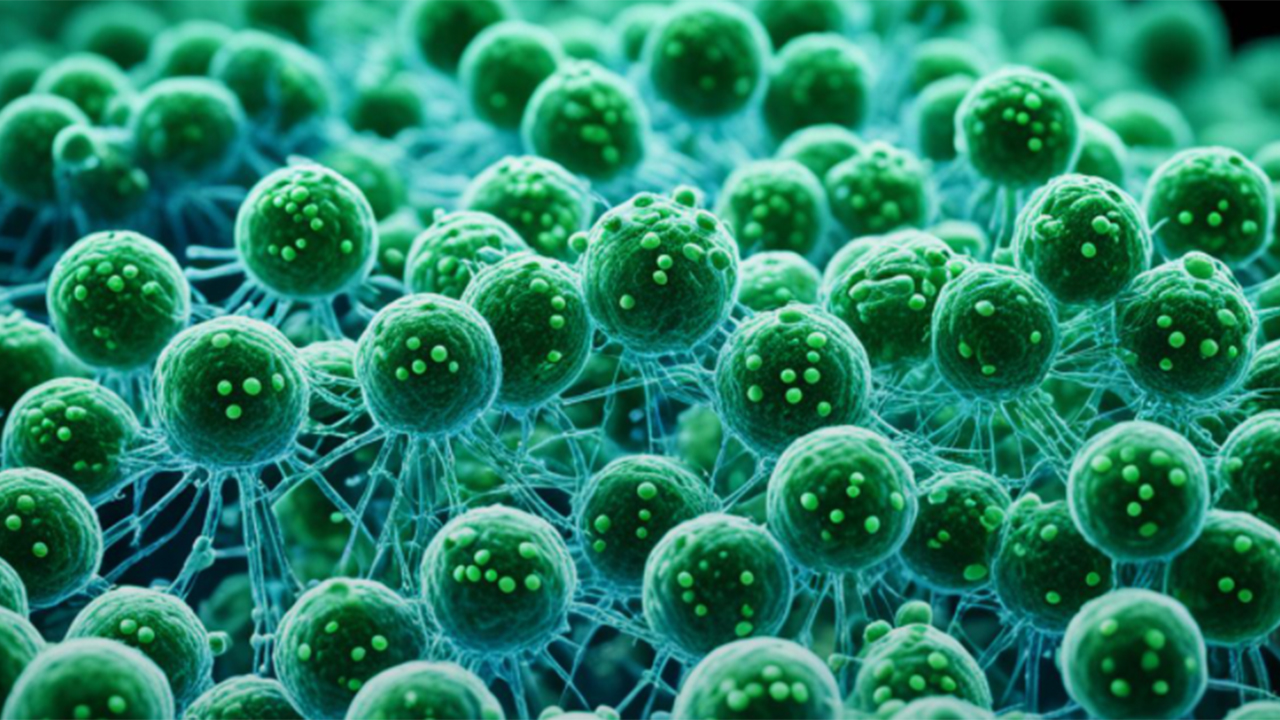Cancer is a complex group of diseases characterized by the uncontrolled growth and spread of abnormal cells. While the word “cancer” can elicit fear, understanding what it truly is can help demystify the condition and empower those affected. This article delves into the definition of cancer, exploring its various types, risk factors, and treatments. By comprehensively understanding cancer, we can better appreciate the advancements in medical science that contribute to its management and care.
What Is Cancer?
Cancer begins in the body’s cells, the building blocks of tissues and organs. Normally, cells grow and divide in a controlled manner to replace old or damaged cells. However, when the regulatory mechanisms of cell growth malfunction, cells can start to grow uncontrollably. This unregulated cell division can lead to the formation of a mass of tissue called a tumor cancer. Tumors can be benign (non-cancerous) or malignant (cancerous).
Malignant tumors are more dangerous because they can invade and destroy surrounding healthy tissues. Furthermore, cancer cells from these tumors can break away and spread to other parts of the body through the blood and lymph nodes, a process known as metastasis.
Types of Cancer
Cancer can develop in virtually any part of the body and can be classified into various types based on the origin of the cancerous cells. Some common types of cancer include:
Breast Cancer: Originates in the cells of the breasts, often forming a lump or mass. It is one of the most common cancers among women.
Lung Cancer: Begins in the lungs and is often associated with smoking. It is a leading cause of cancer-related deaths worldwide.
Skin Cancer: Develops in the skin cells and is primarily caused by excessive exposure to ultraviolet (UV) radiation from the sun.
Blood Cancer: Includes leukemia, lymphoma, and myeloma, affecting the blood cells and the bone marrow where blood cells are produced.
Risk Factors for Cancer
Understanding the risk factors for cancer can help in its prevention and early detection. Some of the key risk factors include:
Genetic Mutations: Inherited mutations in certain genes, such as tumor suppressor genes and DNA repair genes, can increase the risk of developing cancer.
Lifestyle Choices: Smoking, excessive alcohol consumption, and a diet high in processed foods can contribute to cancer.
Environmental Exposures: Prolonged exposure to harmful chemicals, radiation, and certain viruses can increase cancer risk.
Age: The risk of cancer increases with age as genetic damage accumulates over time.
Family History: A family history of certain types of cancer can indicate a higher risk due to shared genetic factors.
How Cancer Spreads
The process of cancer spreading from its original site to other parts of the body is called metastasis. This occurs when cancer cells break away from the primary tumor and travel through the bloodstream or lymphatic system to form new tumors in other organs or tissues. Common sites of metastasis include the bones, liver, lungs, and brain. The ability of cancer cells to invade other tissues and spread is what makes cancer particularly dangerous.
The Role of Genes in Cancer
Genes play a crucial role in the development and progression of cancer. Several types of genes are involved:
Oncogenes: These genes promote cell growth and division. When mutated, they can become permanently activated and lead to uncontrolled cell proliferation.
Tumor Suppressor Genes: These genes normally help regulate cell growth and division. Mutations in these genes can disable their function, allowing cells to grow uncontrollably.
DNA Repair Genes: These genes are responsible for fixing errors that occur during cell division. Mutations in these genes can lead to the accumulation of genetic damage, increasing the risk of cancer.
Immune System and Cancer
The immune system plays a vital role in identifying and destroying abnormal cells, including cancer cells. However, cancer cells can sometimes evade detection by the immune system. Advances in cancer immunotherapy aim to enhance the body’s natural defenses to recognize and attack cancer cells more effectively. Treatments such as checkpoint inhibitors and CAR-T cell therapy are examples of how immunotherapy is being used to combat cancer.
Diagnosing Cancer
Early detection of cancer significantly improves the chances of successful treatment. Several diagnostic tools and techniques are used to detect and diagnose cancer:
Imaging Tests: Techniques such as X-rays, CT scans, MRI, and PET scans help visualize tumors and assess their size and spread.
Biopsies: A sample of tissue is taken from the suspected tumor and examined under a microscope to determine if it is cancerous.
Blood Tests: Certain cancers produce specific substances called tumor markers that can be detected in the blood.
Cancer Treatments
The treatment of cancer depends on the type, location, and stage of the disease, as well as the patient’s overall health. Common cancer treatments include:
Surgery: Removal of the tumor and surrounding tissues. It is often the primary treatment for solid tumors.
Radiation Therapy: Uses high-energy radiation to kill cancer cells or shrink tumors. It can be used alone or in combination with other treatments.
Chemotherapy: Involves the use of drugs to kill cancer cells. Chemotherapy can target rapidly
dividing cells, but it can also affect healthy cells, leading to side effects.
Targeted Therapy: Uses drugs that specifically target genetic changes in cancer cells. This treatment aims to minimize damage to healthy cells.
Immunotherapy: Boosts the immune system’s ability to fight cancer. It includes treatments like checkpoint inhibitors and CAR-T cell therapy.
Hormone Therapy: Used for cancers that are influenced by hormones, such as breast and prostate cancer. It involves blocking the body’s ability to produce hormones or interfering with hormone action.
Advances in Cancer Research
The field of cancer research is continually evolving, with scientists making significant strides in understanding the disease at a molecular level. This progress is paving the way for more effective treatments and diagnostic tools. Here are some notable areas of advancement:
Personalized Medicine
Personalized medicine, also known as precision medicine, is a burgeoning area of cancer treatment that tailors therapies based on the genetic profile of an individual’s tumor. By analyzing the genetic mutations and alterations present in cancer cells, oncologists can select treatments that specifically target these changes. This approach aims to improve treatment efficacy and reduce side effects compared to traditional, one-size-fits-all therapies.
Immunotherapy
Immunotherapy represents a significant breakthrough in cancer treatment. It harnesses the body’s immune system to combat cancer, offering a powerful alternative to conventional treatments like chemotherapy and radiation. Some of the promising types of immunotherapy include:
Checkpoint Inhibitors: These drugs block proteins that prevent immune cells from attacking cancer cells, thereby enhancing the immune response against the tumor.
CAR-T Cell Therapy: This involves modifying a patient’s T cells to express a receptor that targets cancer cells, then reintroducing these engineered cells into the body to fight the cancer.
Gene Editing
Gene editing technologies, such as CRISPR-Cas9, hold promise for cancer treatment by allowing scientists to precisely alter DNA sequences. This technology can potentially be used to correct mutations in tumor suppressor genes or enhance the efficacy of immunotherapies by modifying immune cells to better target cancer cells.
Liquid Biopsies
Liquid biopsies are a non-invasive diagnostic tool that detects cancer-related genetic material in bodily fluids like blood. This technique allows for the monitoring of tumor evolution and the detection of minimal residual disease or recurrence without the need for invasive tissue biopsies. Liquid biopsies can provide real-time insights into the genetic landscape of cancer, aiding in the personalization of treatment strategies.
Living with Cancer
Living with cancer can be challenging, both physically and emotionally. Support from healthcare professionals, family, and friends is crucial. Patients may also benefit from counseling and support groups. Advances in cancer treatment have improved survival rates and quality of life for many
patients. Palliative care, which focuses on relieving symptoms and improving quality of life, is an important aspect of cancer care.
Prevention and Early Detection
While not all cancers can be prevented, certain measures can reduce the risk:
Avoiding Tobacco: Smoking is a major cause of various cancers, including lung cancer.
Healthy Diet and Exercise: A balanced diet rich in fruits and vegetables and regular physical activity can lower cancer risk.
Protecting Skin from UV Radiation: Using sunscreen and wearing protective clothing can reduce the risk of skin cancer.
Vaccinations: Vaccines for viruses like HPV and hepatitis B can prevent cancers associated with these infections.
Regular Screenings: Early detection through screenings like mammograms, Pap tests, and colonoscopies can catch cancers at an early, more treatable stage.
Advances in Early Detection
Early detection of cancer significantly improves treatment outcomes. Research is focused on developing advanced screening methods to catch cancer at its earliest stages:
Biomarkers
Biomarkers are biological molecules found in blood, other body fluids, or tissues that signify a normal or abnormal process, or a condition or disease. Identifying specific biomarkers for different types of cancer can lead to earlier and more accurate diagnoses.
Imaging Technologies
Advances in imaging technologies, such as enhanced MRI and PET scans, provide more precise and detailed images of tumors, aiding in early detection and treatment planning. These technologies are continually being refined to improve their sensitivity and specificity.
Conclusion
Cancer is a multifaceted disease with numerous types and causes. Understanding the definition of cancer, its risk factors, and the mechanisms behind its development and spread can empower individuals to take proactive steps in prevention and early detection. With continued advancements in research and treatment, the outlook for many cancer patients continues to improve, offering hope and better quality of life.
References
American Cancer Society. (2023). What Is Cancer? https://www.cancer.org
National Cancer Institute. (2023). Types of Cancer. https://www.cancer.gov
World Health Organization. (2023). Cancer. https://www.who.int
Mayo Clinic. (2023). Cancer Treatment. https://www.mayoclinic.org
Centers for Disease Control and Prevention. (2023). Cancer Prevention. https://www.cdc.gov
Nature Reviews Cancer. (2023). Advances in Cancer Research. https://www.nature.com/nrc/
Journal of Clinical Oncology. (2023). Personalized Medicine in Cancer. https://ascopubs.org/journal/jco
The Lancet Oncology. (2023). ICancer is a complex group of diseases characterized by the uncontrolled growth and spread of abnormal cells. While the word “cancer” can elicit fear, understanding what it truly is can help demystify the condition and empower those affected. This article delves into the definition of cancer, exploring its various types, risk factors, and treatments. By comprehensively understanding cancer, we can better appreciate the advancements in medical science that contribute to its management and care.
What Is Cancer?
Cancer begins in the body’s cells, the building blocks of tissues and organs. Normally, cells grow and divide in a controlled manner to replace old or damaged cells. However, when the regulatory mechanisms of cell growth malfunction, cells can start to grow uncontrollably. This unregulated cell division can lead to the formation of a mass of tissue called a tumor cancer. Tumors can be benign (non-cancerous) or malignant (cancerous).
Malignant tumors are more dangerous because they can invade and destroy surrounding healthy tissues. Furthermore, cancer cells from these tumors can break away and spread to other parts of the body through the blood and lymph nodes, a process known as metastasis.
Types of Cancer
Cancer can develop in virtually any part of the body and can be classified into various types based on the origin of the cancerous cells. Some common types of cancer include:
Breast Cancer: Originates in the cells of the breasts, often forming a lump or mass. It is one of the most common cancers among women.
Lung Cancer: Begins in the lungs and is often associated with smoking. It is a leading cause of cancer-related deaths worldwide.
Skin Cancer: Develops in the skin cells and is primarily caused by excessive exposure to ultraviolet (UV) radiation from the sun.
Blood Cancer: Includes leukemia, lymphoma, and myeloma, affecting the blood cells and the bone marrow where blood cells are produced.
Risk Factors for Cancer
Understanding the risk factors for cancer can help in its prevention and early detection. Some of the key risk factors include:
Genetic Mutations: Inherited mutations in certain genes, such as tumor suppressor genes and DNA repair genes, can increase the risk of developing cancer.
Lifestyle Choices: Smoking, excessive alcohol consumption, and a diet high in processed foods can contribute to cancer.
Environmental Exposures: Prolonged exposure to harmful chemicals, radiation, and certain viruses can increase cancer risk.
Age: The risk of cancer increases with age as genetic damage accumulates over time.
Family History: A family history of certain types of cancer can indicate a higher risk due to shared genetic factors.
How Cancer Spreads
The process of cancer spreading from its original site to other parts of the body is called metastasis. This occurs when cancer cells break away from the primary tumor and travel through the bloodstream or lymphatic system to form new tumors in other organs or tissues. Common sites of metastasis include the bones, liver, lungs, and brain. The ability of cancer cells to invade other tissues and spread is what makes cancer particularly dangerous.
The Role of Genes in Cancer
Genes play a crucial role in the development and progression of cancer. Several types of genes are involved:
Oncogenes: These genes promote cell growth and division. When mutated, they can become permanently activated and lead to uncontrolled cell proliferation.
Tumor Suppressor Genes: These genes normally help regulate cell growth and division. Mutations in these genes can disable their function, allowing cells to grow uncontrollably.
DNA Repair Genes: These genes are responsible for fixing errors that occur during cell division. Mutations in these genes can lead to the accumulation of genetic damage, increasing the risk of cancer.
Immune System and Cancer
The immune system plays a vital role in identifying and destroying abnormal cells, including cancer cells. However, cancer cells can sometimes evade detection by the immune system. Advances in cancer immunotherapy aim to enhance the body’s natural defenses to recognize and attack cancer cells more effectively. Treatments such as checkpoint inhibitors and CAR-T cell therapy are examples of how immunotherapy is being used to combat cancer.
Diagnosing Cancer
Early detection of cancer significantly improves the chances of successful treatment. Several diagnostic tools and techniques are used to detect and diagnose cancer:
Imaging Tests: Techniques such as X-rays, CT scans, MRI, and PET scans help visualize tumors and assess their size and spread.
Biopsies: A sample of tissue is taken from the suspected tumor and examined under a microscope to determine if it is cancerous.
Blood Tests: Certain cancers produce specific substances called tumor markers that can be detected in the blood.
Cancer Treatments
The treatment of cancer depends on the type, location, and stage of the disease, as well as the patient’s overall health. Common cancer treatments include:
Surgery: Removal of the tumor and surrounding tissues. It is often the primary treatment for solid tumors.
Radiation Therapy: Uses high-energy radiation to kill cancer cells or shrink tumors. It can be used alone or in combination with other treatments.
Chemotherapy: Involves the use of drugs to kill cancer cells. Chemotherapy can target rapidly
dividing cells, but it can also affect healthy cells, leading to side effects.
Targeted Therapy: Uses drugs that specifically target genetic changes in cancer cells. This treatment aims to minimize damage to healthy cells.
Immunotherapy: Boosts the immune system’s ability to fight cancer. It includes treatments like checkpoint inhibitors and CAR-T cell therapy.
Hormone Therapy: Used for cancers that are influenced by hormones, such as breast and prostate cancer. It involves blocking the body’s ability to produce hormones or interfering with hormone action.
Advances in Cancer Research
The field of cancer research is continually evolving, with scientists making significant strides in understanding the disease at a molecular level. This progress is paving the way for more effective treatments and diagnostic tools. Here are some notable areas of advancement:
Personalized Medicine
Personalized medicine, also known as precision medicine, is a burgeoning area of cancer treatment that tailors therapies based on the genetic profile of an individual’s tumor. By analyzing the genetic mutations and alterations present in cancer cells, oncologists can select treatments that specifically target these changes. This approach aims to improve treatment efficacy and reduce side effects compared to traditional, one-size-fits-all therapies.
Immunotherapy
Immunotherapy represents a significant breakthrough in cancer treatment. It harnesses the body’s immune system to combat cancer, offering a powerful alternative to conventional treatments like chemotherapy and radiation. Some of the promising types of immunotherapy include:
Checkpoint Inhibitors: These drugs block proteins that prevent immune cells from attacking cancer cells, thereby enhancing the immune response against the tumor.
CAR-T Cell Therapy: This involves modifying a patient’s T cells to express a receptor that targets cancer cells, then reintroducing these engineered cells into the body to fight the cancer.
Gene Editing
Gene editing technologies, such as CRISPR-Cas9, hold promise for cancer treatment by allowing scientists to precisely alter DNA sequences. This technology can potentially be used to correct mutations in tumor suppressor genes or enhance the efficacy of immunotherapies by modifying immune cells to better target cancer cells.
Liquid Biopsies
Liquid biopsies are a non-invasive diagnostic tool that detects cancer-related genetic material in bodily fluids like blood. This technique allows for the monitoring of tumor evolution and the detection of minimal residual disease or recurrence without the need for invasive tissue biopsies. Liquid biopsies can provide real-time insights into the genetic landscape of cancer, aiding in the personalization of treatment strategies.
Living with Cancer
Living with cancer can be challenging, both physically and emotionally. Support from healthcare professionals, family, and friends is crucial. Patients may also benefit from counseling and support groups. Advances in cancer treatment have improved survival rates and quality of life for many
patients. Palliative care, which focuses on relieving symptoms and improving quality of life, is an important aspect of cancer care.
Prevention and Early Detection
While not all cancers can be prevented, certain measures can reduce the risk:
Avoiding Tobacco: Smoking is a major cause of various cancers, including lung cancer.
Healthy Diet and Exercise: A balanced diet rich in fruits and vegetables and regular physical activity can lower cancer risk.
Protecting Skin from UV Radiation: Using sunscreen and wearing protective clothing can reduce the risk of skin cancer.
Vaccinations: Vaccines for viruses like HPV and hepatitis B can prevent cancers associated with these infections.
Regular Screenings: Early detection through screenings like mammograms, Pap tests, and colonoscopies can catch cancers at an early, more treatable stage.
Advances in Early Detection
Early detection of cancer significantly improves treatment outcomes. Research is focused on developing advanced screening methods to catch cancer at its earliest stages:
Biomarkers
Biomarkers are biological molecules found in blood, other body fluids, or tissues that signify a normal or abnormal process, or a condition or disease. Identifying specific biomarkers for different types of cancer can lead to earlier and more accurate diagnoses.
Imaging Technologies
Advances in imaging technologies, such as enhanced MRI and PET scans, provide more precise and detailed images of tumors, aiding in early detection and treatment planning. These technologies are continually being refined to improve their sensitivity and specificity.
Conclusion
Cancer is a multifaceted disease with numerous types and causes. Understanding the definition of cancer, its risk factors, and the mechanisms behind its development and spread can empower individuals to take proactive steps in prevention and early detection. With continued advancements in research and treatment, the outlook for many cancer patients continues to improve, offering hope and better quality of life.
References
1- American Cancer Society. (2023). What Is Cancer? https://www.cancer.org
2- National Cancer Institute. (2023). Types of Cancer. https://www.cancer.gov
3- World Health Organization. (2023). Cancer. https://www.who.int
4- Mayo Clinic. (2023). Cancer Treatment. https://www.mayoclinic.org
5- Centers for Disease Control and Prevention. (2023). Cancer Prevention. https://www.cdc.gov
6- Nature Reviews Cancer. (2023). Advances in Cancer Research. https://www.nature.com/nrc/
7- Journal of Clinical Oncology. (2023). Personalized Medicine in Cancer. https://ascopubs.org/journal/jco
8- The Lancet Oncology. (2023). Immunotherapy in Cancer Treatment. https://www.thelancet.com/journals/lanonc/home






